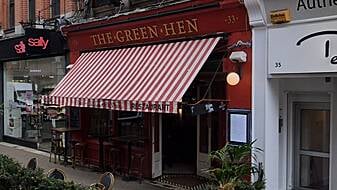Ireland's business and banking sectors continue to demonstrate resilience despite emerging signals of risks crystallising, most immediately so in commercial property, the Central Bank said on Thursday.
The regulator said that while commercial real estate prices have dropped by more than 20 per cent since mid-2020 and may have further to fall, the transmission of the price shock to the domestic financial system has been orderly "up to now".
That was due to relatively prudent lending to the sector by Irish banks and the fact that commercial real estate makes up a smaller share of their overall lending, with international investors increasingly active in the market in recent years.
Ireland is the European hub for many global multinationals who have bought or leased large new offices in recent years. A structural slump in demand for offices was cited by the Central Bank among the strong cyclical headwinds facing the sector.
It said most commercial real estate loans owed to banks need to be repaid or refinanced by 2027, with a quarter due by the end of 2024 set to "test the resilience" of borrowers' business models and capacity to service potentially higher interest costs.
The median balance-weighted interest rate paid by a sample of borrowers analysed by the Central Bank rose to 6.1 per cent in June 2023 from 5.2 per cent in January 2022. It added that receivership numbers remain low.
"Despite these growing risks to borrowers, the systemic impact is likely to be mitigated due to a decline since 2008 in the share of CRE [commercial real estate] in total loans from just over one third to under 10%," the bank said in a biannual report which examines threats to financial stability.
The European Central Bank predicted earlier this week that the euro zone's sinking commercial property sector could struggle for years, posing a threat to the banks and investors that financed it.







